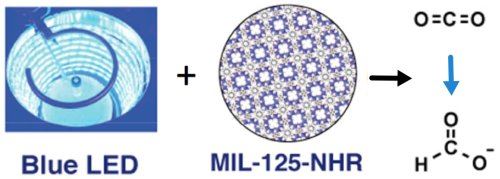A new process of artificial photosynthesis has been developed, allowing to turn carbon dioxide into fuel
A team of researchers from the University of Central Florida (UCF), led by Chemistry Professor Fernando Uribe-Romo, have invented a new way to remove carbon dioxide (CO2) from the air and then convert it into hydrocarbon fuel. To implement the process of artificial photosynthesis, scientists used a new material, which is a metal-organic composite (metal-organic framework, MOF), through which the processes similar to processes in the leaves of trees, which convert carbon dioxide and sunlight into nutrients.Scientists have b
een searching for an effective process of artificial photosynthesis for quite some time. Their main goal is to solve the problem of converting the energy of visible range light into chemical energy contained in hydrocarbon molecules. High-energy ultraviolet light has enough energy, but its share in solar radiation is only 4 percent. Less visible-range energy light is effectively absorbed and converted by just a few materials, such as platinum, renium and iridium, which are very expensive because of their rarity.Scienti
sts in Florida set out to combine a fairly inexpensive titanium with an extremely porous MOF material that had previously been used by a team from the Massachusetts Institute of Technology and the University of California, Berkeley, to implement an effective water extraction technology under the influence of sunlight. The N-alkyl-2-aminoterephthalates used by scientists effectively absorb and use the energy of blue light. In other areas of the visible range, their effectiveness is much lower.

For the research, the scientists used a so-called photoreactor, a cylinder on the inner surface of which are fastened ribbons of blue LEDs, the spectrum of which almost repeats the blue part of the spectrum of solar radiation. The active component of the MOF-based photoreactor, under the influence of light, began to absorb carbon dioxide intensively, converting it into formations and forms, carbon-containing organic compounds.
In their further research, Professor Fernando Uribe-Romo’s team will search for materials that will work in a wider range of visible light. At the same time, research will be carried out to improve the efficiency of existing technologies, and the ultimate goal of scientists is to create a household solar installation that can be placed on the roof of the house. And in addition to cleaning the air from carbon dioxide, this plant will be able, if not completely, then partially, to provide for the energy needs of people living in this house.